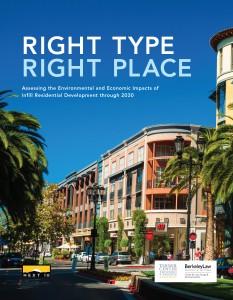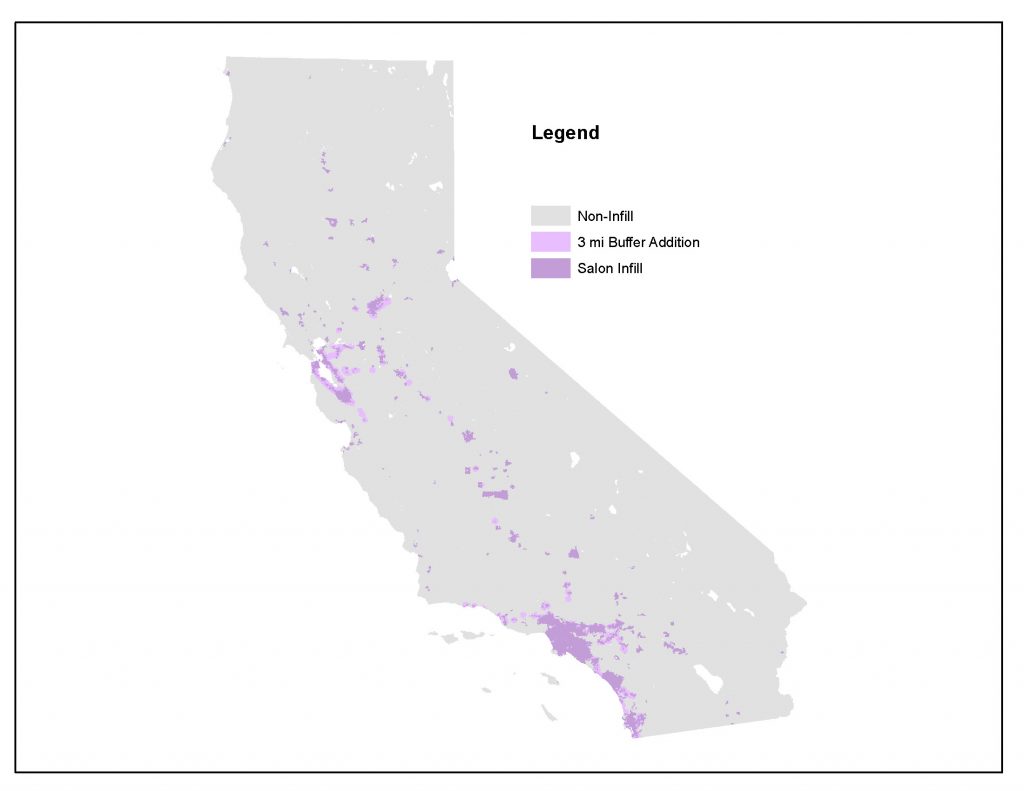 Jennifer Hernandez of the law firm Holland & Knight and John Gamboa of the Greenlining Institute criticized our recent UC Berkeley report on 2030 housing scenarios for California that could help meet the state’s long-term greenhouse gas goals.
Jennifer Hernandez of the law firm Holland & Knight and John Gamboa of the Greenlining Institute criticized our recent UC Berkeley report on 2030 housing scenarios for California that could help meet the state’s long-term greenhouse gas goals.
Their piece in the Fox & Hounds website makes the hard-to-argue-with point that California policy makers should design climate policies — and particularly cap-and-trade — with an eye toward the costs on average Californians.
From my perspective, the state is already moving in that direction, with detailed assessments of the impacts of these programs on everything from gas prices to electricity rates. The state is also mitigating the impact for residents, with “climate credits” on our electricity bills, a guaranteed set-aside of cap-and-trade auction revenue for disadvantaged communities, and greater electric vehicle rebates for low-income residents, among other efforts.
But sure, more could be done, and it’s smart to examine these policies critically. Certainly from a pure political perspective, California’s climate efforts won’t retain support if they cause price and other shocks to residents.
So I’m all with Hernandez and Gamboa on the general point, although I think they fail to acknowledge how much care and analysis the state has already put into the programs involved.
But then the article singles out “Right Type, Right Place” report for criticism for being obtuse on the impacts of climate-friendly housing on everyday Californians:
In one recent report, for example, some of the most respected housing policy thinkers in the state make the case that if California could only build more high-density housing in a narrow subset of urban areas along the coast—where transit is already in place—greenhouse gas emissions from cars could be reduced by nearly two million metric tons per year, household utility bills trimmed by $5 a month, and monthly transportation costs lowered by $58. All while requiring people to spend only $38 more per month on rent—and less than $14,000 more for an average home.
Where do we sign up, right? What the study, like so many others, fails to account for is the social cost—and the economic unlikelihood—of this “infill-only” scenario actually coming to pass. The authors’ housing cost data doesn’t factor in the cost, for example, of relocating hundreds of thousands of people already living in existing lower-cost, lower-density homes in these areas. The study doesn’t account for the fast-growing fees many coastal jurisdictions are imposing to slow this very type of housing (as much as $100,000 per unit in some places). Nor does it account for the stark differences in the cost of land, which is between three and 10 times higher in coastal areas than inland California (and which is the biggest reason so many workers slog through three-hour commutes each day).
Most importantly, the study seems to accept the fact that this “preferred,” coastal-focused housing scenario will produce an average monthly rent of $2,702. Even without factoring in massive displacement, rising local exactions, and land costs that are likely to push development elsewhere, this number alone should give everyone pause. To pay that much rent, an “average” household would need to earn $97,200 a year! The median income in California today is only $62,000.
First, let’s look at the claim that our study limited development in the infill scenario to just a “narrow subset of urban areas along the coast.” One look at the map below of “purple” infill areas should dispel that characterization:

Sure, some of the purple areas are near the coast, but so is the vast majority of California’s population. This map shows that there’s actually a lot of land that could meet the preferred criteria all around the state.
Second, while it’s true our report methodology didn’t include a way to measure “social costs,” our policy recommendations addressed concerns around gentrification and displacement from infill development. And we offered ways to mitigate those impacts.
Third, the policy recommendations in the report also addressed the need to remove local barriers to housing in prime infill areas, such as the escalating fees on urban development that Hernandez and Gamboa mentioned.
Finally, Hernandez and Gamboa’s effort to compare the average rent in our infill scenario to median household income seems less important than comparing that rent amount to what Californians are actually paying today, when you combine average current household and transportation costs. That would be a more interesting comparison.
I should also note that if California actually succeeded in building enough housing to meet population growth, as our scenario assumed but as is not happening in reality, my personal view is that the extra housing supply would stabilize prices and rents in these infill areas (although we didn’t model that effect in our report).
As a general response to this criticism, our report did not do a financial feasibility analysis of the scenarios, so I think critiques related to that lack of information are valid. But we were up front about missing that level of analysis and recommend that future research build on this work. After all, this is the first comprehensive, academic effort to look at 2030 housing scenarios and how they can fit with the state’s greenhouse gas reduction goals. This report is an important starting point for this discussion, and we hope others build on it.
But it’s not accurate to suggest we didn’t think about these “social” and other economic costs. And this criticism also misses the added benefit of more infill housing for low-income residents which we also didn’t quantify: access to high-paying jobs in cheaper overall housing. Right now, with lower-cost housing out in sprawl areas, these residents not only face long commutes at high cost to access good jobs, they’re contributing to environmental degradation for everyone.
Solving that problem would be an environmental and economic win-win for all of California’s residents. And in any back-and-forth over details, we should not lose sight of that larger, more important point.


